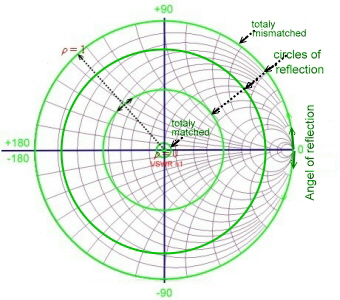

Sometimes this simplification of a scalar quantity and it’s restricted definition can lead to confusion in the matter of a source to load match. Generally, VSWR is sometimes used as a stand-in for a figure of merit for impedance matching. This is fine but what has it to do with common usage in ads and specifications. Now we can define VSWR (SWR) as a scalar value:

The square of | Γ | is then the power of the reflected wave, the square hinting at a historical reference to voltage waves. The reflection coefficient, commonly denoted by the Greek letter gamma (Γ), can be calculated from the values of the complex load impedance and the transmission line characteristic impedance which in principle could also be a complex number. This helps us because we can actually measure power. This value varies from -1 (for a shorted load) to +1 (for an open load), and becomes 0 for matched impedance load. A reflection coefficient is defined as the ratio of reflected wave to incident wave at a reference plane. This in turn leads to a mathematical definition of VSWR in terms of a reflection coefficient. Sometimes VSWR is called SWR to avoid using the term voltage and to instead use the concept of power waves. Unless you have a piece of slotted line-test equipment this is a hard definition to use, especially since the concept of voltage in a microwave structure has many interpretations. It varies from 1 to (plus) infinity and is always positive. VSWR is defined as the ratio of the maximum voltage to the minimum voltage in standing wave pattern along the length of a transmission line structure. Click here to learn about VSWR problems in medical applicationsĬlick here to learn about designing for high peak powerĬlick here to learn about Microwave101's reflection coefficient "Sniffer" circuitĬlick here to learn about that pesky minus sign in return loss measurementsĬlick here for a discussion of maximum power transferĬlick here to learn about slotted line measurementsĬlick here to go to our discussion on mismatch loss (and other cool stuff!) VSWR


 0 kommentar(er)
0 kommentar(er)
